So many spectacular flowering plants begin with the letter C! How will you ever choose which ones to plant? Whether you’re looking for dependable perennials to take a place in your landscape or showy annuals to fill in the gaps, here is a list of captivating flowers that start with C.
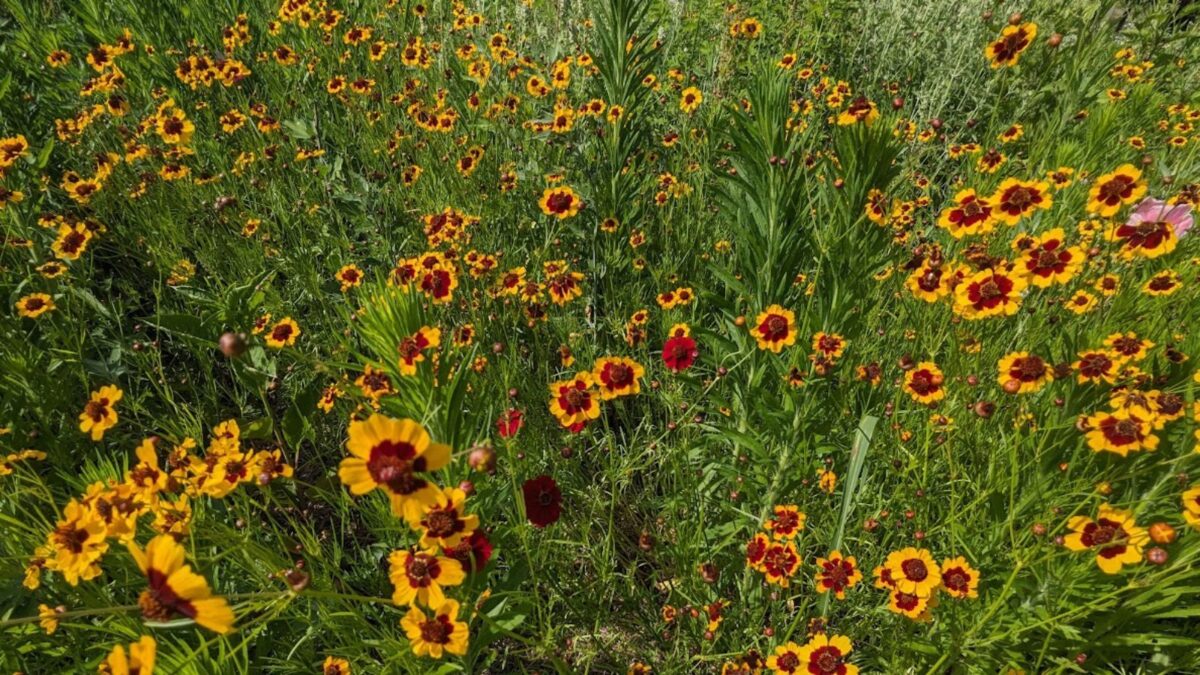
Annual Flowers that Start with C
1. Calendula (Calendula officinalis)

Commonly called pot marigolds, these cheery, yellow or orange, mum-like flowers bloom in the spring and fall. They grow well in containers as well as cottage gardens and cut flower patches.
When planted in well-draining soil and full sun, calendulas are easy to care for. In areas with especially hot summers, though, they do best with some afternoon shade. Water and deadhead regularly for bountiful blooms.
2. California poppy (Eschscholzia californica)

This bright orange wildflower was historically used in cosmetics, medicine, and cooking by indigenous people on the West Coast. It thrives in full sun even with little care and is remarkably drought tolerant.
Although native to California, this self-seeding wildflower has become a weed in other parts of the country, so check with your local extension office before planting outside of California and consider deadheading to improve flowering and prevent spreading.
3. Catchfly (Silene sp.)
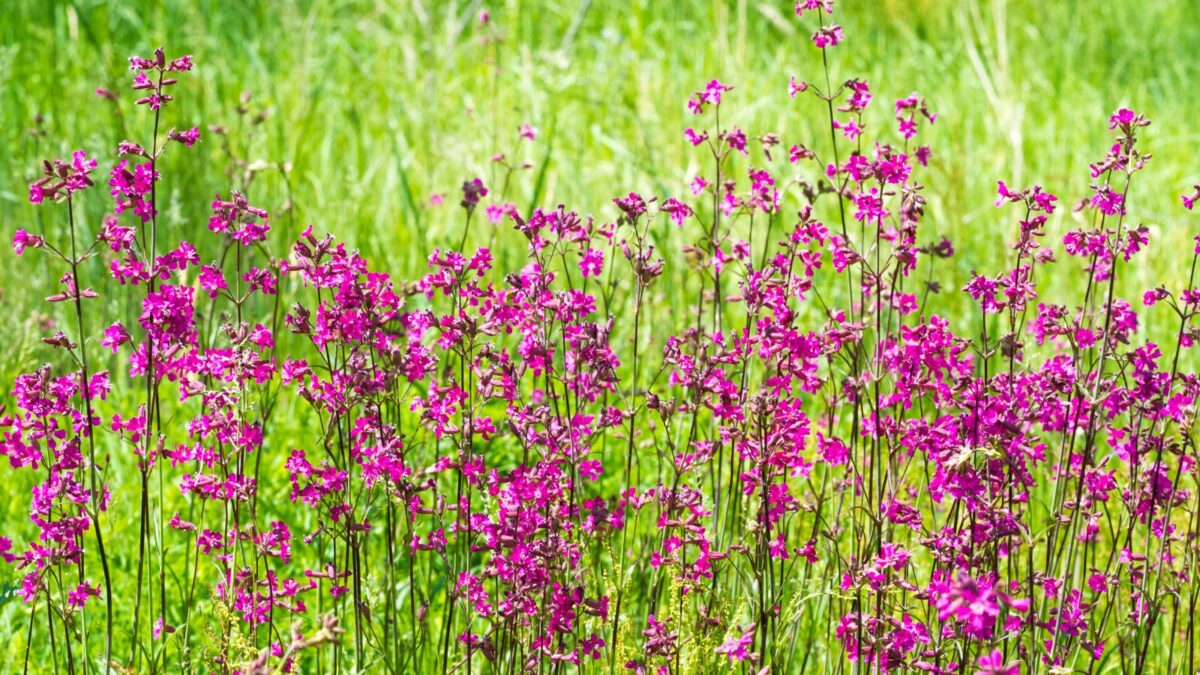
A North American grassland native catchfly gets its name from leaves and stems so sticky they could, supposedly, trap a fly. Although it does not serve as a natural flytrap, catchfly does produce lovely star-shaped flowers in pink, white, or red that attract butterflies and hummingbirds.
Catchfly prefers full to part sun and tolerates drought, but not wet conditions. After it blooms in the summer, leave the spent flower stalks if you want them to reseed and return next year.
4. Celosia (Celosia cristata, C. argentea, C. spicata)
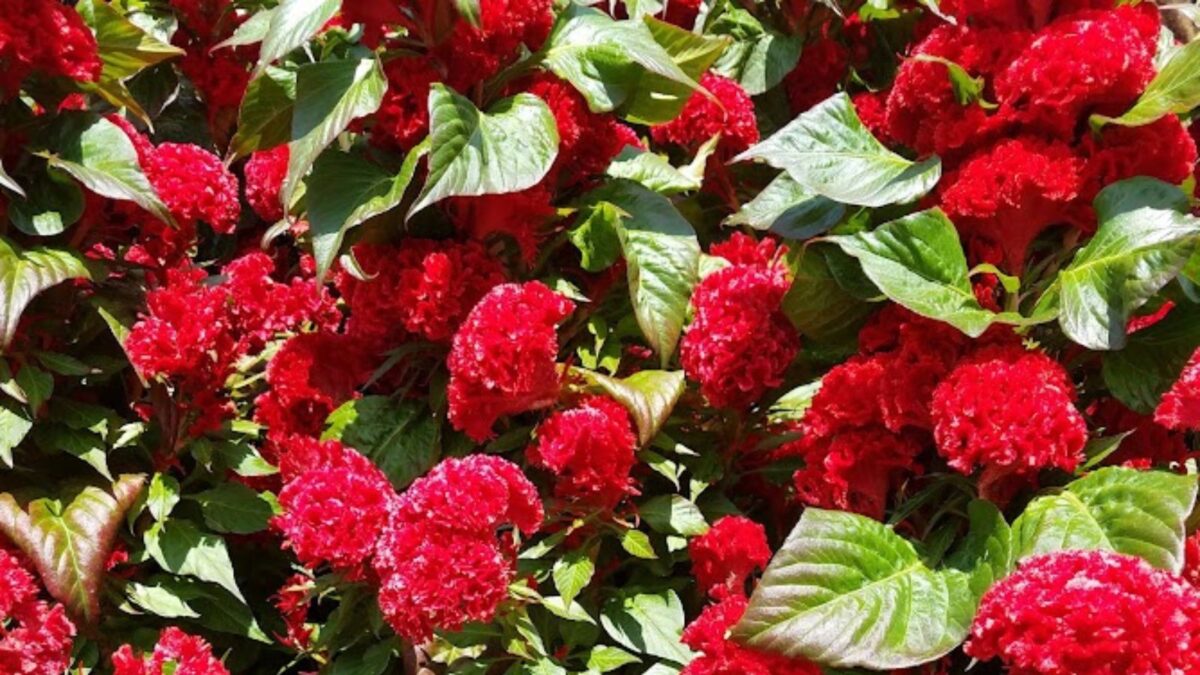
These unique feathery or velvety flowers come in various bright shades, including purple, orange, white, pink, and yellow.
There are three main species:
- C. cristata, aptly called cockscomb, has the unique appearance of a rooster’s comb.
- C. argentea, or plumed celosia, has feathery, arrowhead-shaped flowers.
- C. spicata, or wheat celosia, produces blooms with softer colors in the shape of a head of wheat.
All three species like full sun and can be grown in containers and beds.
5. Cosmos (Cosmos sp.)

Available in various bright colors, this easy-to-grow flower with lovely fern-like foliage is perfect for cottage gardens and cut flower beds. It thrives in full sun and well-draining soil; taller varieties may need staking or other support.
Leave a few spent blooms when deadheading to allow the plants to self-seed.
Perennial Flowers that Start with C
6. Cardinal flower (Lobelia cardinalis)
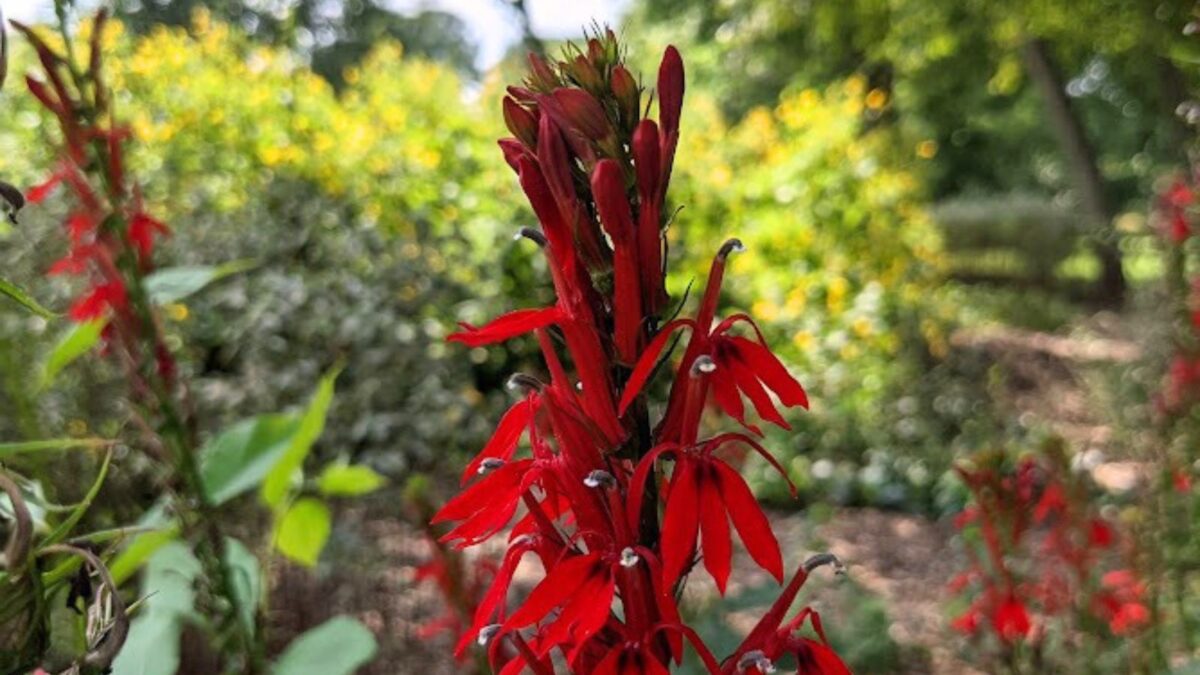
True to its name, the cardinal flower produces stunning red flowers in loose spires. Its brilliant tubular red flowers attract hummingbirds and pollinators, making it perfect for wildlife gardens.
Use in bog gardens or landscaping around ponds or streams, as this native plant thrives in wet conditions. It prefers full to part sun.
7. Carnation (Dianthus caryophyllus)

One of the oldest and most popular cut flowers, carnations come in a variety of lovely colors. They thrive in both containers and flower beds, as long as they receive at least four to five hours of sunlight each day (full sun is best) and good air circulation.
Well-draining soil is also important, and especially tall plants may require support to keep them upright.
8. Chrysanthemum (Chrysanthemum sp.)

Although chrysanthemums, or simply mums, appear in droves at garden centers and grocery stores in the fall, only to be discarded a few weeks later, they are actually perennials when properly cared for.
Plant these autumn-blooming flowers in the late spring to allow them plenty of time to develop strong roots before freezing weather returns, and ensure they sit in evenly moist but well-draining soil and receive full sun.
9. Cinquefoil (Potentilla sp.)
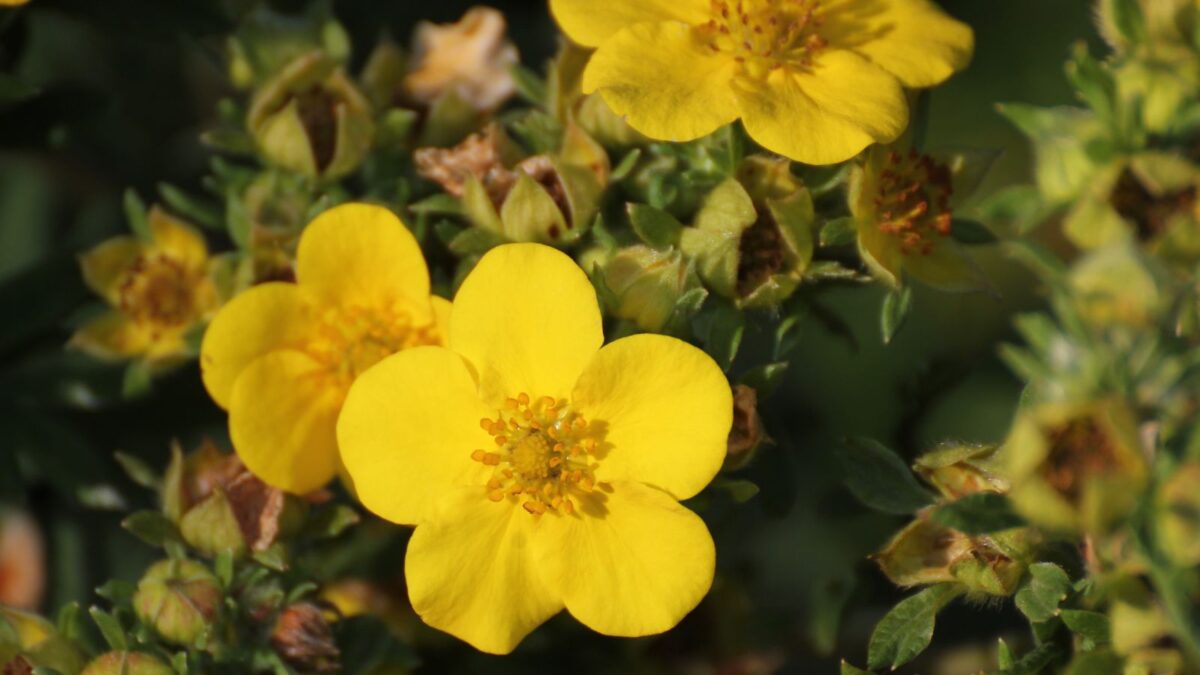
This attractive little groundcover has lovely lemon-colored flowers that bloom in the spring and strawberry-scented foliage that doesn’t mind being mowed. In fact, mowing with the blade on the highest setting can help revive a ragged plant.
Cinquefoil does well in full sun to partial shade, with the latter being preferable in hotter regions, and it thrives in moist but well-draining soil.
10. Columbine (Aquilegia sp.)
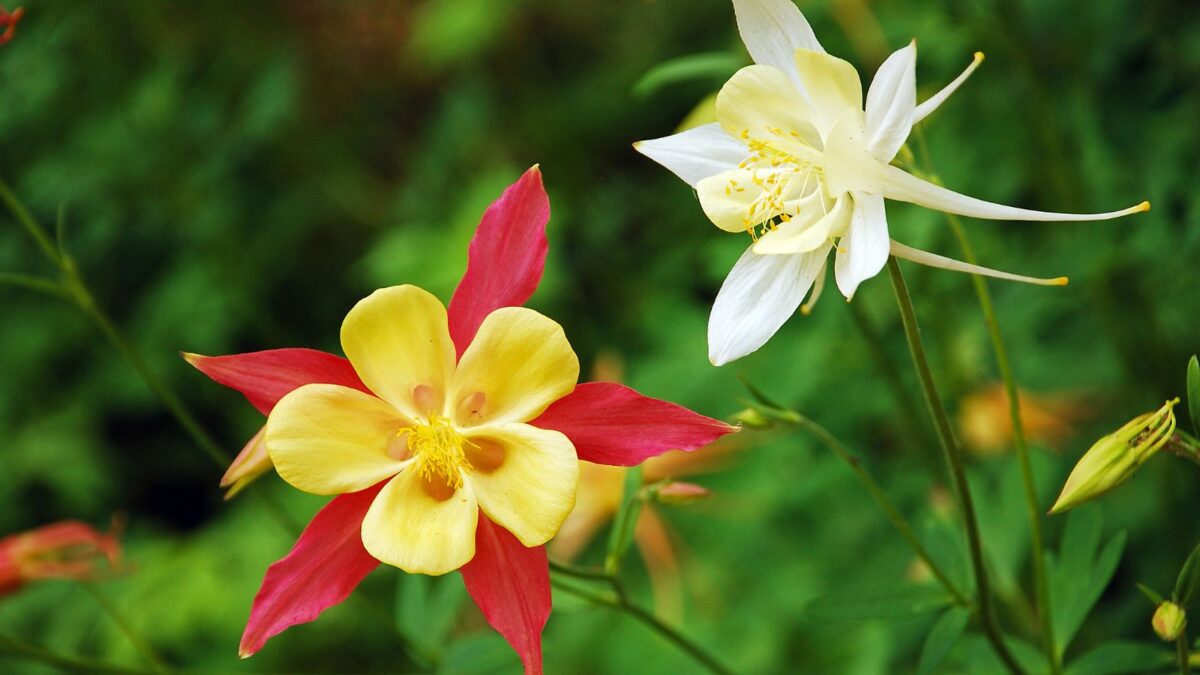
These unique, nodding flowers come in a range of colors, and many varieties are native to different parts of North America. Once established, they require very little care, and they happily reseed to fill in gaps.
The most common varieties do best in partial shade, making them perfect for woodland gardens, though alpine species prefer full sun. All columbines do best in cooler weather, so even alpine varieties will benefit from some afternoon shade in areas with hot, humid summers.
11. Compass plant (Silphium laciniatum)

A native of North American tallgrass prairies, compass plant is a lovely addition to borders and wildflower meadows. Its tall stalks and yellow flowers resemble wild sunflowers, and the early settlers who gave the plant its common name believed the large leaves pointed north and south.
This low-maintenance wildflower prefers full sun and deep, well-draining soil.
12. Coreopsis (Coreopsis sp.)

Available in yellow, orange, red, and pink, these sunny native prairie flowers attract pollinators during their long blooming period and birds after their seed sets. They tolerate less-than-ideal conditions and even prefer slightly dry soil and full sun.
Deadhead regularly for new blossoms, but remember to leave a few spent blooms for the birds to snack on.
Get tickseed coreopsis seeds here.
13. Crocus (Crocus sp.)
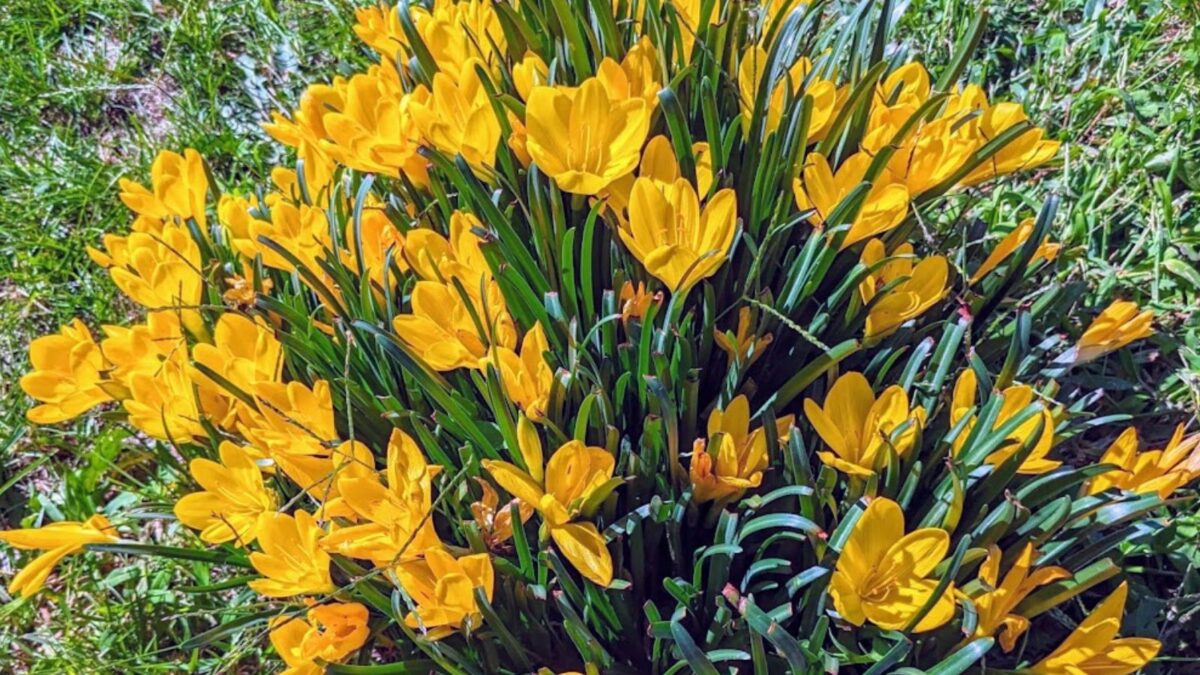
One of the first flowers to bloom in the spring, the crocus pushes up leaves and buds even through the snow as a welcome reminder that warmer months are on the way. Plant the bulbs in a rock garden, around shrubs and trees, or even scattered throughout the lawn.
These easy-to-grow flowers do well in full sun to light shade.
Some varieties bloom in the fall, so for color both at the end and beginning of the cold season, plant a mix of spring and fall bulbs in the same area.
Which of these captivating flowers that start with C will you add to your garden?
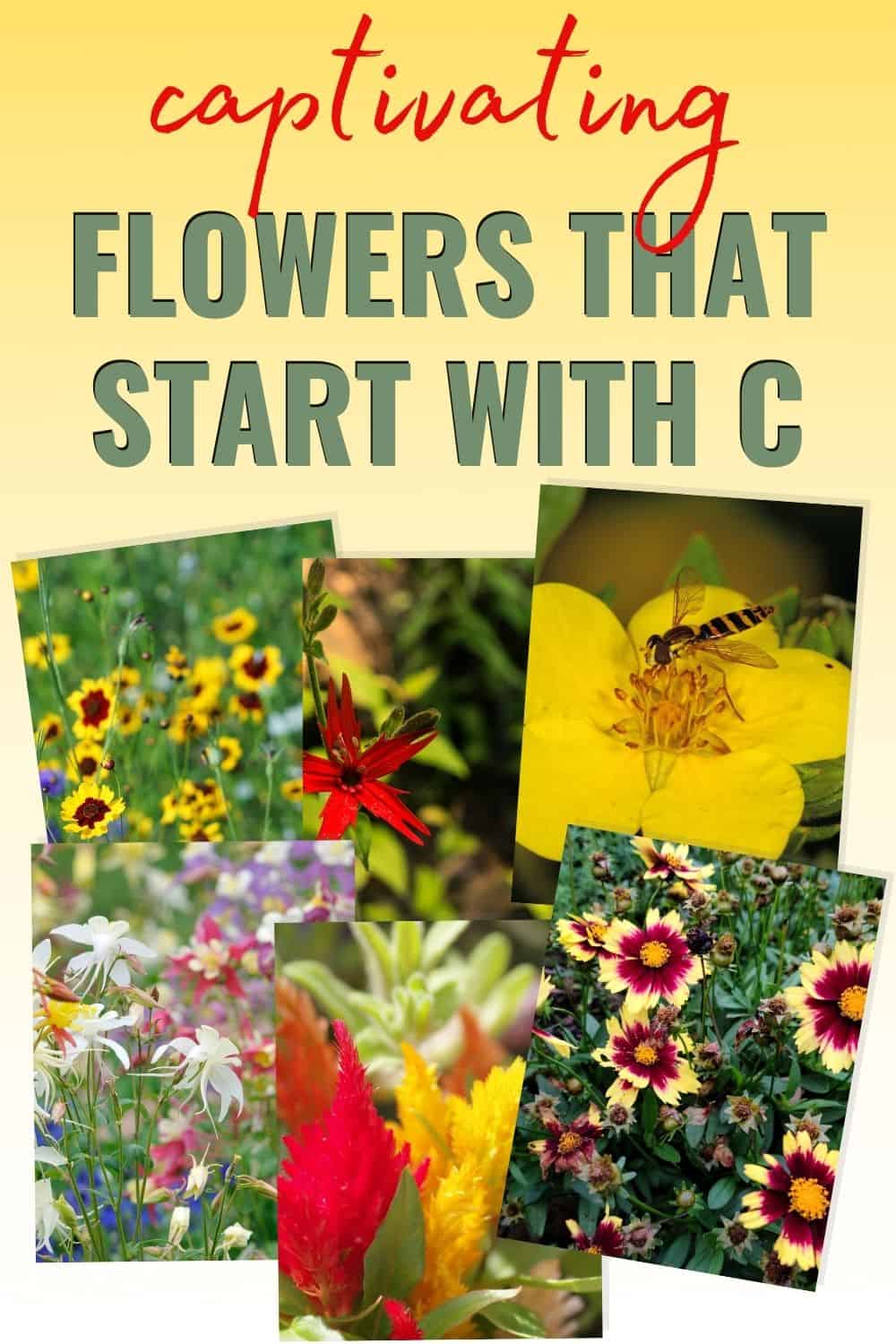

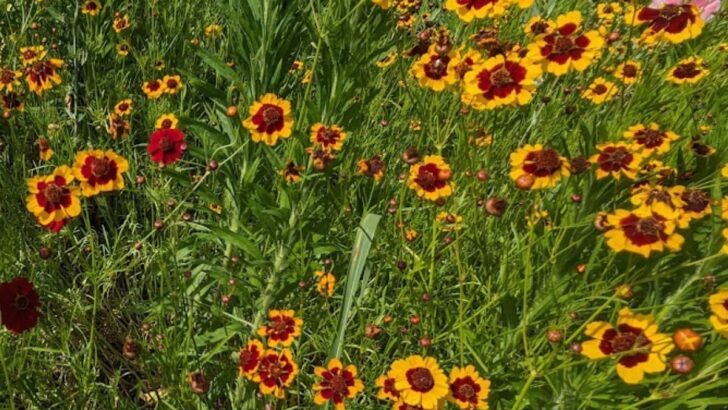

Beautiful Flower Garden Ideas
Wednesday 3rd of February 2021
[…] 13 Captivating Flowers that Start with C […]